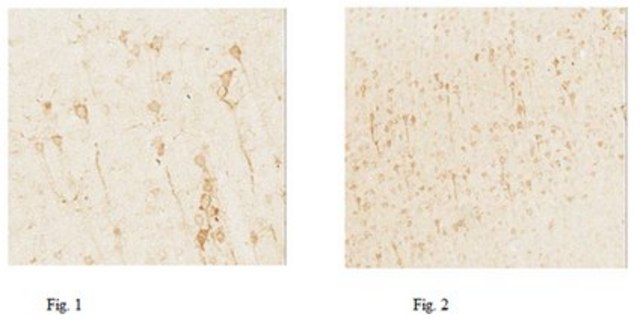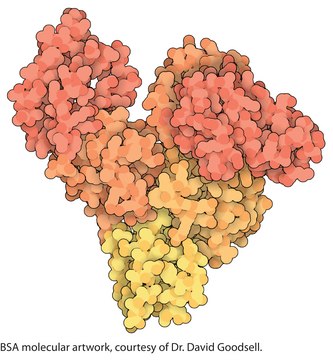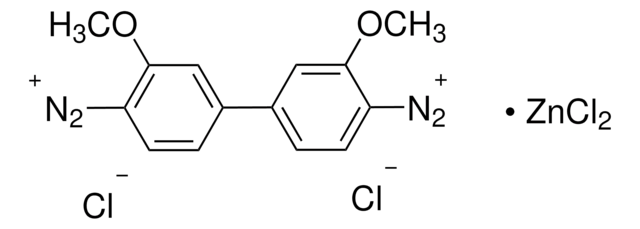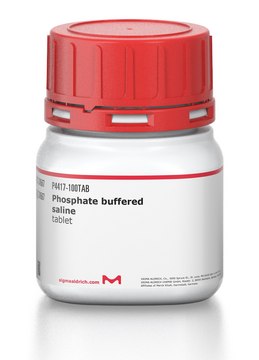39286
Hydroxystilbamidine bis(methanesulfonate)
suitable for fluorescence, ≥96.0% (HPLC)
Synonym(s):
2-Hydroxystilbene-4,4′-dicarboxamidine bis(methanesulfonate), Fluoro-Gold
About This Item
Recommended Products
Quality Level
Assay
≥96.0% (HPLC)
form
powder
fluorescence
λex 318 nm; λem 560 nm in TBE Buffer
suitability
suitable for fluorescence
storage temp.
2-8°C
SMILES string
CS(O)(=O)=O.CS(O)(=O)=O.NC(=N)c1ccc(cc1)\C=C\c2ccc(cc2O)C(N)=N
InChI
1S/C16H16N4O.2CH4O3S/c17-15(18)12-5-2-10(3-6-12)1-4-11-7-8-13(16(19)20)9-14(11)21;2*1-5(2,3)4/h1-9,21H,(H3,17,18)(H3,19,20);2*1H3,(H,2,3,4)/b4-1+;;
InChI key
YGNSQKCULHSJDC-HFPMQDOPSA-N
Looking for similar products? Visit Product Comparison Guide
Related Categories
General description
A few properties of Hydroxystilbamidine bis (methanesulfonate) are:
- Intense Fluorescence.
- Extensive filling of dendrites.
- High Resistance to fading.
- No uptake by undamaged fibers.
- No diffusion from labelled cells.
- Highly compatible with other neuro-histochemical techniques.
Application
Signal Word
Warning
Hazard Statements
Precautionary Statements
Hazard Classifications
Eye Irrit. 2 - Skin Irrit. 2 - STOT SE 3
Target Organs
Respiratory system
Storage Class Code
11 - Combustible Solids
WGK
WGK 3
Flash Point(F)
Not applicable
Flash Point(C)
Not applicable
Personal Protective Equipment
Choose from one of the most recent versions:
Already Own This Product?
Find documentation for the products that you have recently purchased in the Document Library.
Our team of scientists has experience in all areas of research including Life Science, Material Science, Chemical Synthesis, Chromatography, Analytical and many others.
Contact Technical Service







